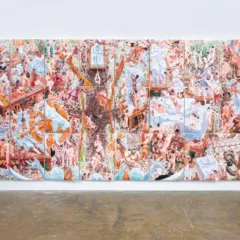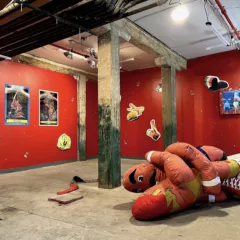—>In this post by guest writer Rachel Pfeffer, we learn about three artists whose show is a kind of conversation that took place among them. –the Artblog editors——————>
Post by Rachel Pfeffer
In their collaborative show, “Little Queen of Nothing: Ownership of the Everyday”, David Meekins, Arielle Passenti, and Rebecca Tennenbaum present a record of their visual conversation. The three artists’ works, staged in the Project Room at Crane Arts, fall under a broad definition of collage and incorporate found materials from each of their daily environments. The artists created most of the work for the show separately while remaining involved in one another’s process from a distance, using the collective experience of making the work as an entry point to discuss broad existential themes, such as the nature of authorship and artistic inspiration, and investigate the creative community between them..
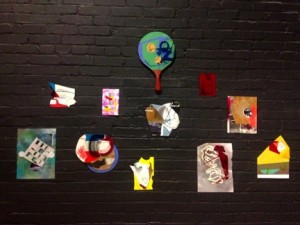
A group of smaller pieces made by the artists together as a group hang on one wall, but the majority of their collaboration lies in sharing ideas and trading materials.
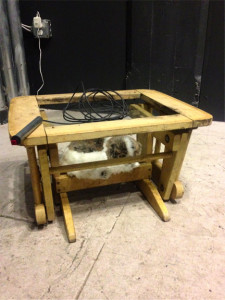
David Meekins’ work is the most sculptural, and his Dadaist-appropriated toys and machine fragments hanging amongst framed pieces and works on panel broaden the idiomatic range of the whole show. Meekins’ untitled interactive mechanical sculpture sits on the floor in one corner. The piece is a plush toy dog hiding under a modified, child-sized piece of furniture. Viewers use a joystick to make the dog “breathe,” and the effect is both eerie and adorable.
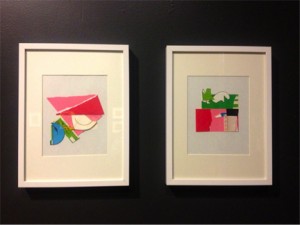
The collaboration between the artists really shines in Arielle Passenti’s untitled paper diptych. Working with materials sent to her by Meekins, Passenti made this piece with a very “Florida” color palette, where forms on white backgrounds hint at objectivity — a successful departure from the physically-impossible sense of space in her other compositions..
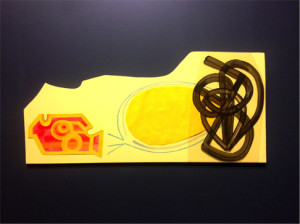
Tennenbaum and Meekins collaborated on a video, greeting visitors at the entrance, with short clips of mundane, everyday occurrences on a tiny screen, but Tennenbaum takes a definitively-painterly approach to her work on the walls. A counter to the other artists’ use of found objects, Tennenbaum uses mostly traditional art materials. One untitled piece features abstract forms rendered in paint on pieces of Bristol and mylar, layered over paper and crayon on an irregularly-shaped, yellow panel and gives a sense that each fragment part was not created specifically for the final composition, but chosen.
Most of the work hangs in a tight, unlabeled row along three walls of the gallery, which is hidden at the end of a hallway, its walls painted all black— a remnant of a previous show. Passenti and Tennenbaum, both friends of mine, collaborated on another show in the same space in March. They used the eccentricities of the room to their advantage this time around, and it gives the show a feeling of a semi-private meeting in a metaphysical space.
“Little Queen…” draws the viewer into an ongoing critical discussion that begins and ends outside the controlled realm of the gallery. “The everyday” referenced in the shows subtitle is perhaps the artists’ shared exploratory practice itself, and they capture fleeting qualities of a moment in their process, framing the work as documentation rather than a conclusive result. Focusing on the collaborative experience as a conceptual theme ultimately creates a nicely cohesive group show that presents a study of impermanence and the transformative effect of context.
“Little Queen of Nothing: Ownership of the Everyday” can be seen at the Project Room at Crane Arts, 1400 N American Street, Philadelphia PA,until September 30, free and open to the public.
Rachel Pfeffer is a Philadelphia artist, illustrator, and writer. You can find her work and news about upcoming projects on her blog (http://rainbowfeather.tumblr.com/).


